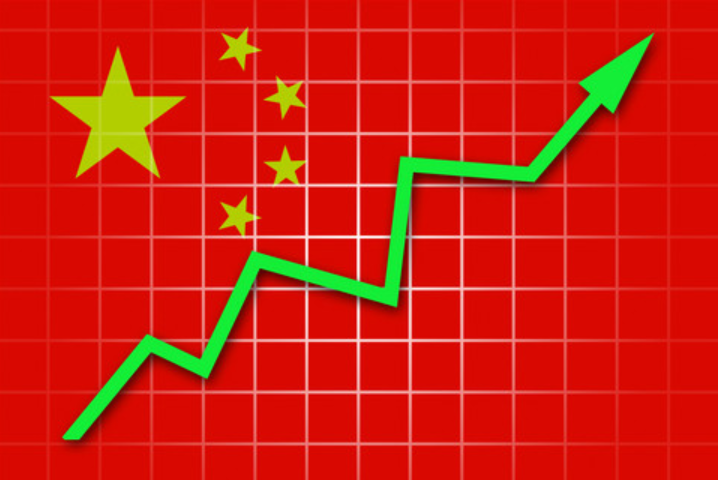Kina har den laveste vækst siden 1990’erne, og dele af økonomien er ramt af kriser og barske regeringsindgreb. Men i kriser er der investeringschancer, siger Merrill i en omfattende analyse af Kina. Aktiemarkederne er faldet kraftigt til ekstremt lave niveauer, og det gælder også for de globale indeks for kinesiske aktier. De er på vej op igen, og derfor ser Merrill nogle indlysende chancer for investorer. Kina kan blive et af de vigtigste globale markeder, og Merrill peger på digitaliseringen som en ledetråd og på de følgende sektorer, som oplagte chancer for investorerne: semiconductors, cloud computing, robotics, artificial intelligence, cybersecurity, advanced manufacturing, biotechnology and clean energy—groups. Det er sektorer, som regeringen i Beijing satser på for at gøre Kina stærkere i den globale konkurrence.
China’s Internal Challenges: In Crisis, Opportunity
In the midst of the ongoing Russia-Ukraine conflict, China’s role on the world stage has come under close scrutiny. Concerns abound over its links to Russia, its ambitions on Taiwan, its relationship with the new administration in South Korea and, particularly in the wake of talks between President Xi and President Biden earlier this month, its diplomatic relations with the U.S. and Western allies.
But for investors, internal developments within China have been much more important. Chinese Equities have been among the worst performing markets globally so far this year, with investors experiencing extreme volatility on the back of major shifts in local policymaking.

In terms of the regulatory environment, the past year has seen accelerated state intervention across a range of industries within the Technology sector, including online retail, digital media and food delivery. In each of these cases, the regulatory target has been different, but the underlying motivation of the authorities has been the same—to preserve the legitimacy of the central government by maintaining social stability and so-called “common prosperity.” And this, along with the ongoing threat of delisting from U.S. exchanges, has contributed to a major de-rating of the Chinese market. But the selloff has not been uniform, either by sector or by exchange.
The most digitally oriented sectors of Information Technology, Consumer Discretionary and Communication services have led the downdraft, and shares listed outside mainland exchanges have also been the hardest hit. China-listed shares, by contrast, have performed much better across the broad market. The onshore Shanghai Composite Index, which is also the most diversified by sector, has registered the smallest peak-to-trough decline from last year’s highs (-17%). The Nasdaq Golden Dragon China Index, which includes only U.S.-listed companies and has 85% of its market capitalization in technology, consumer discretionary and communication services, has seen the largest drop (-75%). And the MSCI China Index, which still has a more than 50% concentration in the three most tech-driven sectors but is also the most diversified across U.S., Hong Kong and mainland China exchanges, has fallen in between the two (-54%) (Exhibit 2).
The market effect of these combined pressures from coronavirus, real estate and regulation escalated in mid-March after the People’s Bank of China failed to cut the medium-term bank lending rate as expected, producing sharp moves lower in Chinese Equities. This was followed by aggressive verbal intervention from the Chinese vice-premier, calling for the government to “actively introduce policies that benefit markets.”
Investors have since enjoyed a massive surge in Chinese Equities from extremely depressed levels. But as we have seen in past episodes, more concrete policy support measures may be needed before the broad market can continue higher
on a sustained basis.
However, instead of avoiding China as an investment destination altogether, this in our view emphasizes the need for investors to remain focused on market segments that are aligned with China’s longer-term strategic goals rather than those viewed as potential sources of instability.
And this spans a broad range of industries, including semiconductors, cloud computing, robotics, artificial intelligence, cybersecurity, advanced manufacturing, biotechnology and clean energy—groups that are less likely to be vulnerable to coronavirus related shutdowns, hit by slower real estate activity, or subject to regulatory restrictions.
Indeed these areas should receive more official support as China’s technological capacity remains critical to its aim of becoming a high-income economy by 2025 and delivering on national priorities of indigenous innovation, inclusive growth and economic self-sufficiency.
In this regard, it is instructive that the latest Five-Year Plan adopted last year abandoned explicit projections for economic growth and instead focused on more specific industrial targets. These included increasing the value-added share of GDP in digital industries from 8% to 10%, maintaining annual growth in research and development spending at over 7%, doubling the number of high-value patents per 10,000 people from six to 12, and decreasing carbon intensity by 18%. Despite the
recent turbulence in Chinese markets, we expect these priorities to support growth in related areas over the years ahead.
As we have seen over recent weeks, the risk of periodic market intervention by the Chinese authorities, whether on coronavirus, real estate or regulation, is likely to remain a source of volatility as regulators look to enforce policies designed to preserve social stability. But we nonetheless still see an underlying trend of continuing expansion in market segments tied to the strategic aims of the Chinese leadership.
The Chinese term for crisis (“Wei-Ji”) is composed of two words meaning “danger” and “opportunity.” For investors, the recent market turmoil stemming from China’s internal challenges should, in our view, only enhance the potential for
longer-term gains in selected Chinese industries.







